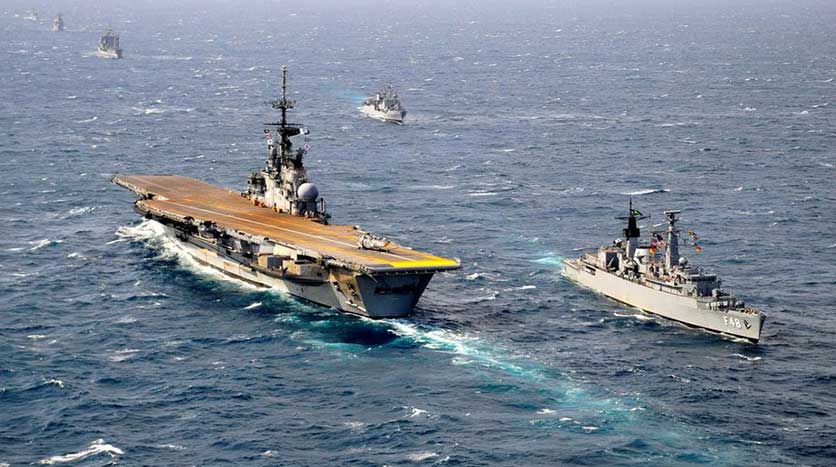The Brazilian government has sunk a 60-year-old decommissioned aircraft carrier off the Atlantic Ocean. The French-constructed warship was built in the 1950s and was a 32,000-ton carrier that could accommodate 40 warplanes. Named “Sao Paulo”, the aircraft carrier measured 266 meters (873 feet) and was purchased for $12 million in 2000; it needed an $80 million repair that was never carried out.

According to the Brazilian Navy, the decades-old carrier was sunk 350 kilometers (217 miles) off the Brazilian coast at a depth of 5,000 meters (16,000 feet) where the environmental impact would be most minimal. The government said it was a “planned and controlled sinking” that took place on Friday afternoon.
However, environmental groups such as the Basel Action Network, Shipbreaking Platform, Greenpeace, and federal public prosecutors warned against the sinking of the ship. They argued that the massive aircraft carrier contained 9 tons of asbestos used in paneling, mercury, lead, and other toxic substances that would destroy the natural integrity of the marine ecosystem.
The groups urged Brazilian President Luiz Inacio Lula da Silva to scuttle the proposed destruction of the ship in the waters to prevent environmental damage. But this was not heeded. “The Brazilian Navy chose to harm the environment and lose millions of dollars rather than allow public inspection of the ship,” Greenpeace said, calling the sinking the “biggest breach of chemical and waste agreements ever committed by a country.”
Greenpeace argued that sinking Sao Paulo was in stark violation of the Basel Convention, the London Convention on the prevention of marine pollution, and the Stockholm Convention on persistent organic pollutants. But the Brazilian government contended that there was no other way of getting rid of the giant warship except by sinking at a safe location identified by the Navy’s Hydrography Centre.
“In view of the facts presented and the increasing risk involved in towing, due to the deterioration of the hull’s buoyancy conditions and the inevitability of spontaneous/uncontrolled sinking, it is not possible to adopt any other course of action other than jettisoning the hull, through of the planned and controlled sinking,” the defense ministry stated.
In 2021, the Brazilian government allowed a Turkish marine recycling firm, Sok Denizcilik, to purchase the hull for $10.5 million and to dismantle the ship into scrap metal. A tugboat tried to tow the decommissioned warship into the Mediterranean Sea but the Turkish government blocked the move out of concern for the environment, and the ship was towed back to Brazil where it remained floating offshore for three months.
The government said it would then have to be disposed of in a manner that would “avoid logistical, operational, environmental, and economic losses to the Brazilian state.”
